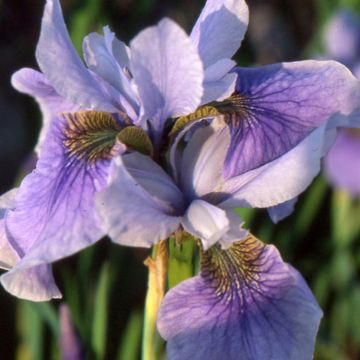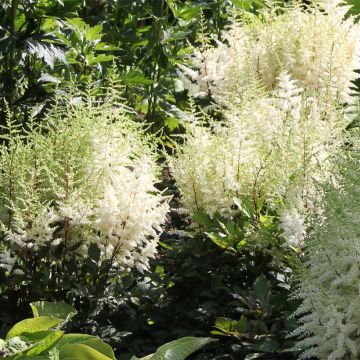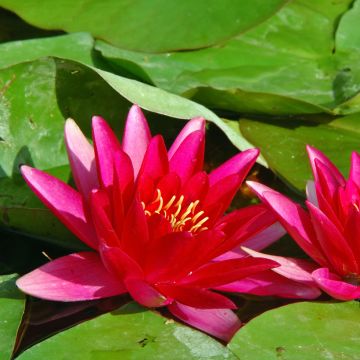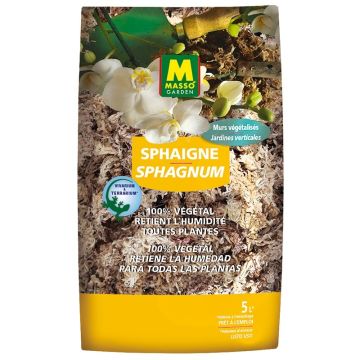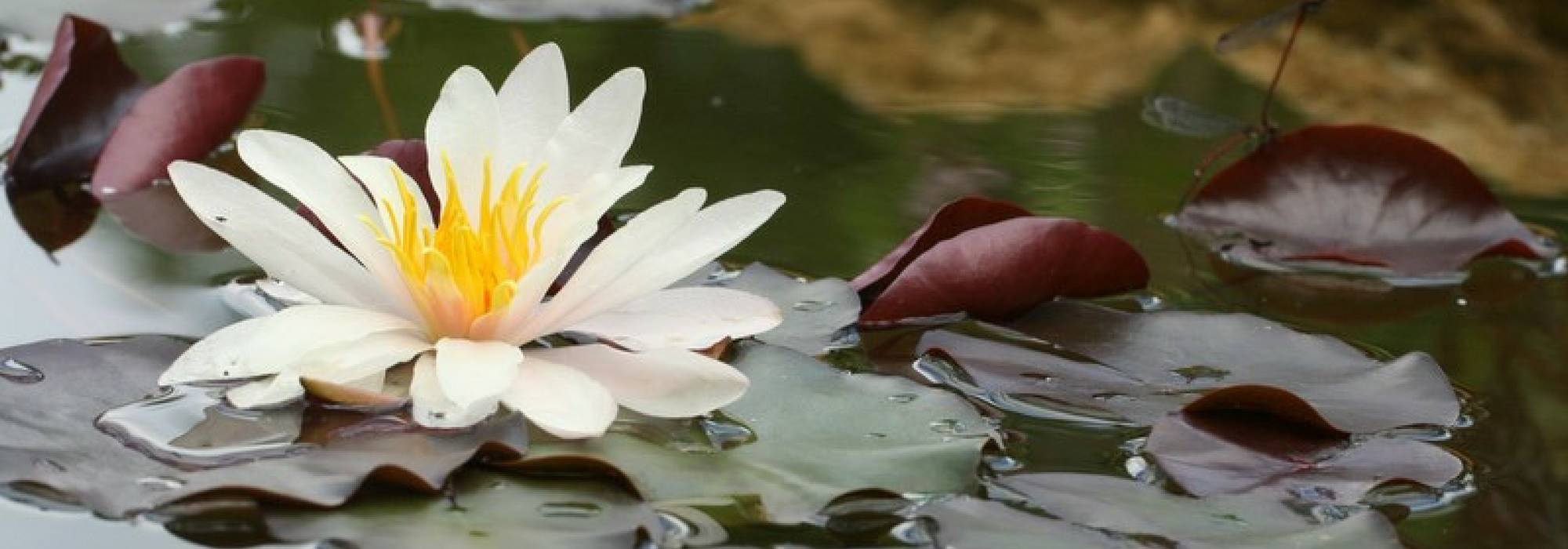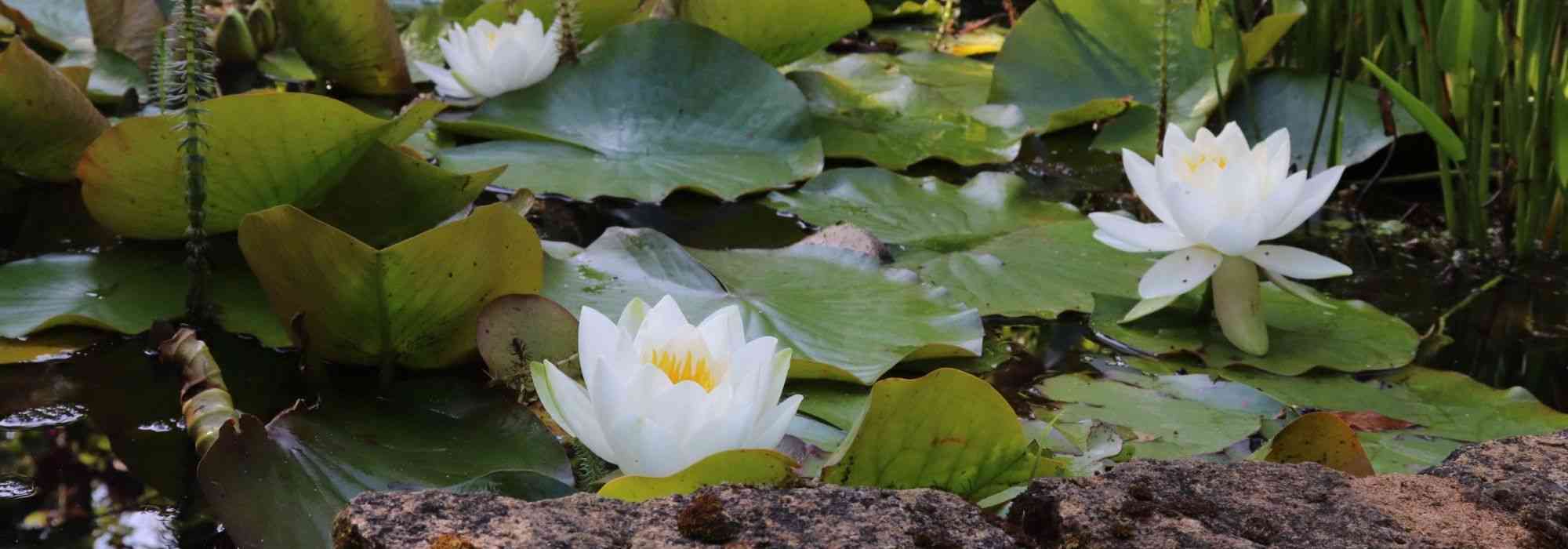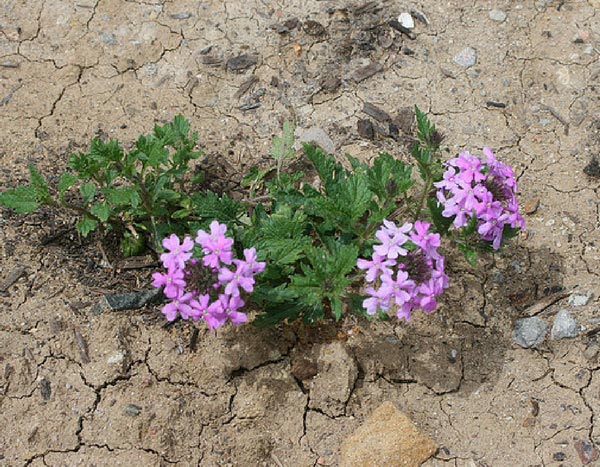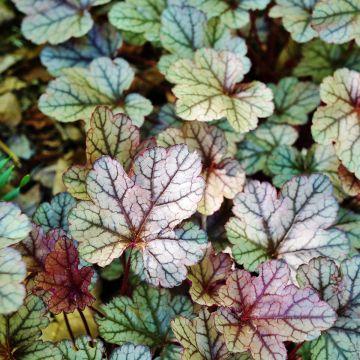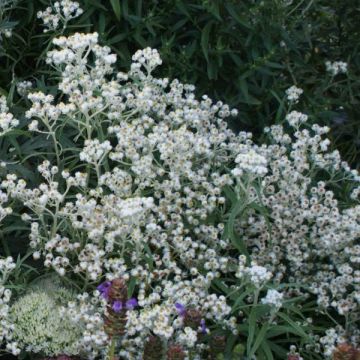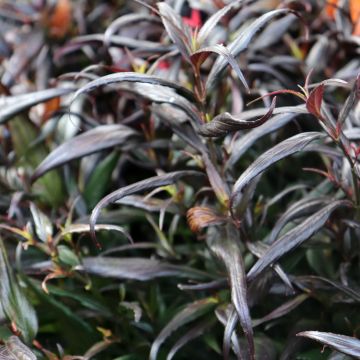

Zizania latifolia
Zizania latifolia
Zizania latifolia
Manchurian wild rice
Special offer!
Receive a €20 voucher for any order over €90 (excluding delivery costs, credit notes, and plastic-free options)!
1- Add your favorite plants to your cart.
2- Once you have reached €90, confirm your order (you can even choose the delivery date!).
3- As soon as your order is shipped, you will receive an email containing your voucher code, valid for 3 months (90 days).
Your voucher is unique and can only be used once, for any order with a minimum value of €20, excluding delivery costs.
Can be combined with other current offers, non-divisible and non-refundable.
Why not try an alternative variety in stock?
View all →This plant carries a 12 months recovery warranty
More information
We guarantee the quality of our plants for a full growing cycle, and will replace at our expense any plant that fails to recover under normal climatic and planting conditions.
Does this plant fit my garden?
Set up your Plantfit profile →
Description
The Zizania latifolia, also known as Manchurian wild rice, is an aquatic herbaceous grass, perennial by its rhizomes, that thrives in muddy or marshy soils on the shores of bodies of water at a water depth ranging from 10 to 40 cm. Its foliage, with its striking translucency, attracts every ray of light, even on cloudy days, on its one to two-metre tall stems. Its elegant, flexible, and slender silhouette displays a vibrant colour that intensifies in autumn, and then its leaves transform into bleached culms before blending into winter. The unique sound of the leaves rubbing against each other reminds one of bamboo, adding an often underestimated touch to the delicate animation of the garden. The Zizania latifolia, a close relative of cultivated rice, reveals an unknown beauty in aquatic landscapes. When grown in pots, its clump growth forms a clear, bright, and airy screen, distinguishing it with a refined and rare elegance.
The Zizania latifolia, known as Manchurian wild rice, belongs to the Poaceae family, formerly known as grasses. This family includes herbaceous plants, often unbranched, with hollow cylindrical stems bearing nodes called culms. Native to Asian countries such as China, Japan, Korea, India, Vietnam, Myanmar, and Taiwan, Zizania latifolia is an aquatic perennial grass that thrives in swamps and along riverbanks. Although it is robust, only the plant's stump survives the winter cold, leading to the disappearance of the aboveground parts that reemerge in spring.
The robust rhizomes of this herbaceous grass produce stolons with scales and small vegetative buds, promoting the plant's expansion. The Zizania latifolia forms a clump between 0.80 and 1.80 m in height, and its foliage is semi-evergreen. The linear leaves, 3 to 6 cm wide, offer a remarkable graphic aspect, changing from light green in spring to bright yellow in summer, then turning straw yellow in autumn. This winter hue remains decorative if the plant is not pruned. With their excellent translucency, the leaves capture light and sometimes appear almost luminous as they absorb the sun's rays.
Moreover, these culms provide a refuge suitable for nesting aquatic birds. During the summer season, terminal panicles form at the top, displaying numerous spikelets about 5 cm long. Unlike common rice (Oryza sativa), Manchurian wild rice is not cultivated for its seeds, although they are edible. The interest lies instead in the turions, the swollen bases of its young culms. Under the influence of fungal parasitosis, these turions take on a swollen shape and are appreciated as tender and sweet vegetables, which can be consumed raw or cooked.
Manchurian wild rice thrives in sunny, moist, fertile, dense soil, with its feet in the water up to a depth of 50 cm, as long as there is available land. It thrives in aquatic environments such as ponds, rivers, basins, marshy, and lagoon areas. It can become invasive if not controlled, so it is important to monitor the spread of rhizomes to avoid any negative impact on the development of other riparian plants. It also effectively combats erosion of shallows and banks thanks to its root system. Its aboveground and subaquatic vegetation provides a refuge for wetland animals, protecting them and promoting their concealment for reproduction or hunting. Manchurian wild rice is a beautiful aesthetic alternative to Phragmites australis (Common Reed) and Typha latifolia (Cattail) without the relative visual heaviness that the latter can sometimes impose due to their imposing dimensions.
Nevertheless, it can be harmoniously integrated into lagoon systems and these same plants. It can also be planted in containers or pots filled with water and fertile soil. Its effect is spectacular throughout the growing season, but protecting the pots in regions with harsh winters is essential.
Report an error about the product description
Zizania latifolia in pictures
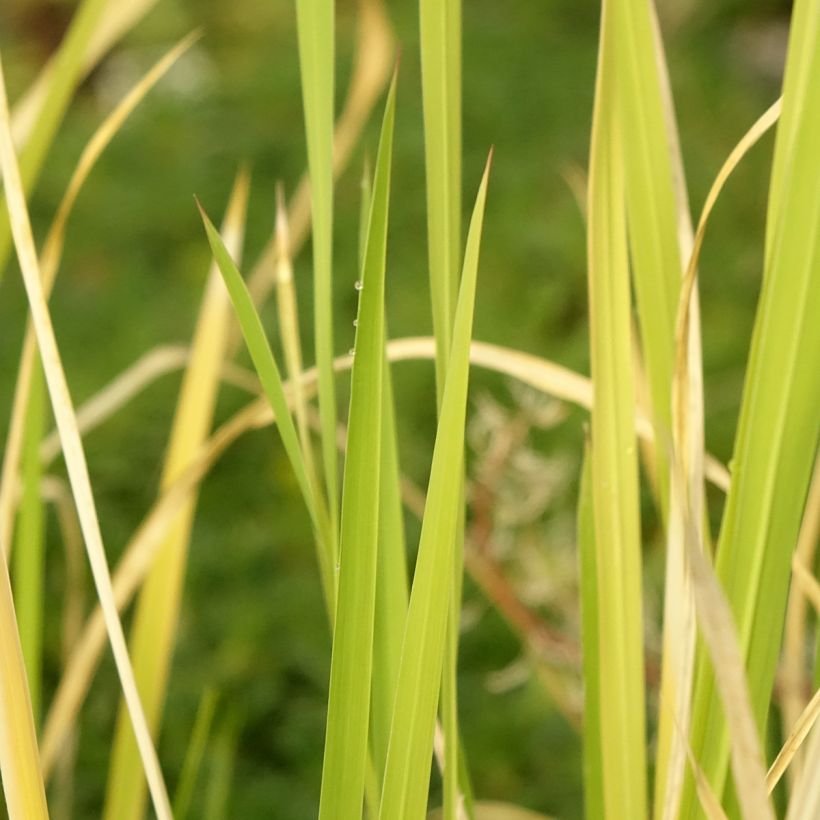

Flowering
Foliage
Plant habit
Botanical data
Zizania
latifolia
Poaceae
Manchurian wild rice
Hydropyrum latifolium, Zizania caduciflora
East Asia
Planting and care
Zizania latifolia is an aquatic grass that thrives in various environments, such as stagnant or slightly flowing water, marshy areas, shallow parts of ponds, transition zones, shores, and small, medium, and large ponds.
Plant it in moist, muddy, rich soil, even clay or loamy clay, slightly acidic to neutral. Planting can be done all year round, except during freezing periods, but it is ideal to plant it from March to May to establish itself before the winter cold. Place it in a sunny location. It is a plant of marshy areas that require constant moisture at the root level, making sure not to exceed a permanent immersion of more than 40 cm of water.
In a pond, a basin, or on the banks of a large body of water, allows for a significant space due to the somewhat invasive nature of this plant. Dig a planting hole in the mud, plant your Wild Rice of Manchuria, making sure that the top of the root ball is at ground level. The average planting distance between plants is about 40 to 50 centimetres in groups of 5 to 7 specimens for a better effect.
It can also be grown in a pot or even in drier soil, which will restrict its growth. It can also be planted in ponds with flexible liners, as its tender shoots are not strong enough to pierce the liner or cause any inconvenience in swimming ponds.
Planting period
Intended location
Care
Planting & care advice
This item has not been reviewed yet - be the first to leave a review about it.
Similar products
Haven't found what you were looking for?
Hardiness is the lowest winter temperature a plant can endure without suffering serious damage or even dying. However, hardiness is affected by location (a sheltered area, such as a patio), protection (winter cover) and soil type (hardiness is improved by well-drained soil).

Photo Sharing Terms & Conditions
In order to encourage gardeners to interact and share their experiences, Promesse de fleurs offers various media enabling content to be uploaded onto its Site - in particular via the ‘Photo sharing’ module.
The User agrees to refrain from:
- Posting any content that is illegal, prejudicial, insulting, racist, inciteful to hatred, revisionist, contrary to public decency, that infringes on privacy or on the privacy rights of third parties, in particular the publicity rights of persons and goods, intellectual property rights, or the right to privacy.
- Submitting content on behalf of a third party;
- Impersonate the identity of a third party and/or publish any personal information about a third party;
In general, the User undertakes to refrain from any unethical behaviour.
All Content (in particular text, comments, files, images, photos, videos, creative works, etc.), which may be subject to property or intellectual property rights, image or other private rights, shall remain the property of the User, subject to the limited rights granted by the terms of the licence granted by Promesse de fleurs as stated below. Users are at liberty to publish or not to publish such Content on the Site, notably via the ‘Photo Sharing’ facility, and accept that this Content shall be made public and freely accessible, notably on the Internet.
Users further acknowledge, undertake to have ,and guarantee that they hold all necessary rights and permissions to publish such material on the Site, in particular with regard to the legislation in force pertaining to any privacy, property, intellectual property, image, or contractual rights, or rights of any other nature. By publishing such Content on the Site, Users acknowledge accepting full liability as publishers of the Content within the meaning of the law, and grant Promesse de fleurs, free of charge, an inclusive, worldwide licence for the said Content for the entire duration of its publication, including all reproduction, representation, up/downloading, displaying, performing, transmission, and storage rights.
Users also grant permission for their name to be linked to the Content and accept that this link may not always be made available.
By engaging in posting material, Users consent to their Content becoming automatically accessible on the Internet, in particular on other sites and/or blogs and/or web pages of the Promesse de fleurs site, including in particular social pages and the Promesse de fleurs catalogue.
Users may secure the removal of entrusted content free of charge by issuing a simple request via our contact form.
The flowering period indicated on our website applies to countries and regions located in USDA zone 8 (France, the United Kingdom, Ireland, the Netherlands, etc.)
It will vary according to where you live:
- In zones 9 to 10 (Italy, Spain, Greece, etc.), flowering will occur about 2 to 4 weeks earlier.
- In zones 6 to 7 (Germany, Poland, Slovenia, and lower mountainous regions), flowering will be delayed by 2 to 3 weeks.
- In zone 5 (Central Europe, Scandinavia), blooming will be delayed by 3 to 5 weeks.
In temperate climates, pruning of spring-flowering shrubs (forsythia, spireas, etc.) should be done just after flowering.
Pruning of summer-flowering shrubs (Indian Lilac, Perovskia, etc.) can be done in winter or spring.
In cold regions as well as with frost-sensitive plants, avoid pruning too early when severe frosts may still occur.
The planting period indicated on our website applies to countries and regions located in USDA zone 8 (France, United Kingdom, Ireland, Netherlands).
It will vary according to where you live:
- In Mediterranean zones (Marseille, Madrid, Milan, etc.), autumn and winter are the best planting periods.
- In continental zones (Strasbourg, Munich, Vienna, etc.), delay planting by 2 to 3 weeks in spring and bring it forward by 2 to 4 weeks in autumn.
- In mountainous regions (the Alps, Pyrenees, Carpathians, etc.), it is best to plant in late spring (May-June) or late summer (August-September).
The harvesting period indicated on our website applies to countries and regions in USDA zone 8 (France, England, Ireland, the Netherlands).
In colder areas (Scandinavia, Poland, Austria...) fruit and vegetable harvests are likely to be delayed by 3-4 weeks.
In warmer areas (Italy, Spain, Greece, etc.), harvesting will probably take place earlier, depending on weather conditions.
The sowing periods indicated on our website apply to countries and regions within USDA Zone 8 (France, UK, Ireland, Netherlands).
In colder areas (Scandinavia, Poland, Austria...), delay any outdoor sowing by 3-4 weeks, or sow under glass.
In warmer climes (Italy, Spain, Greece, etc.), bring outdoor sowing forward by a few weeks.































